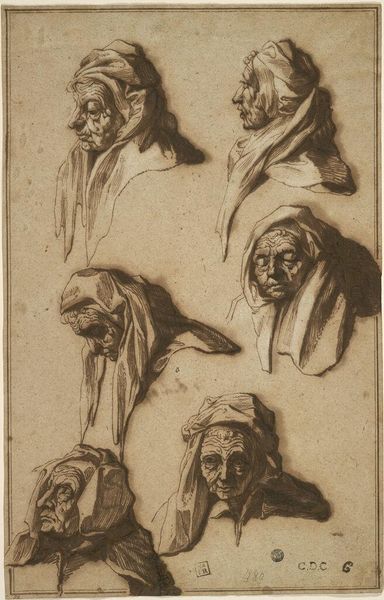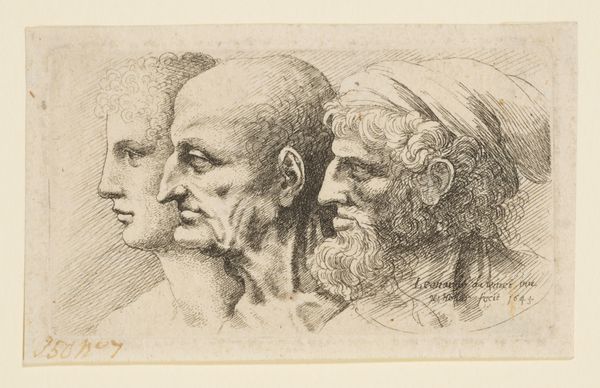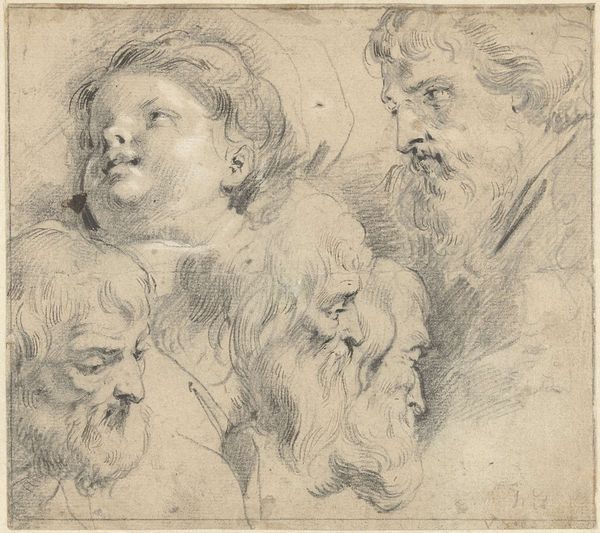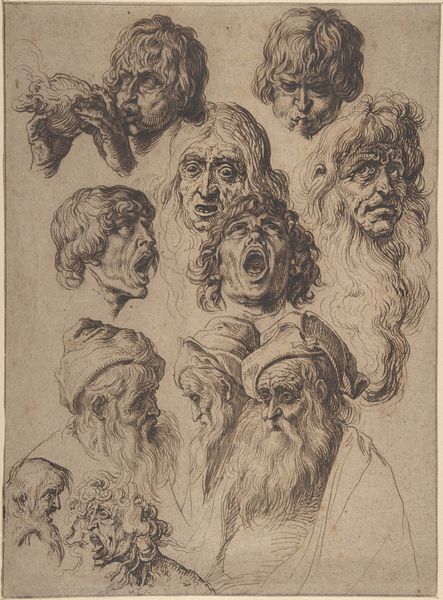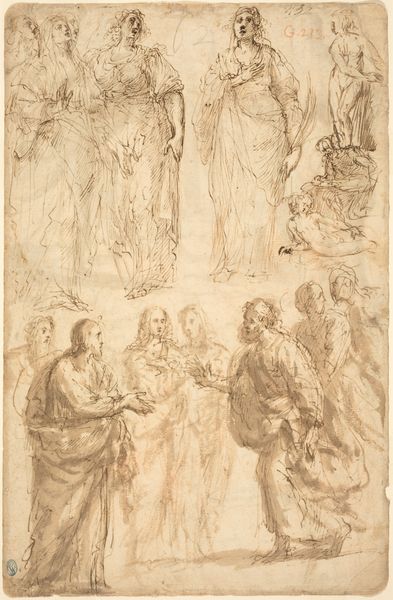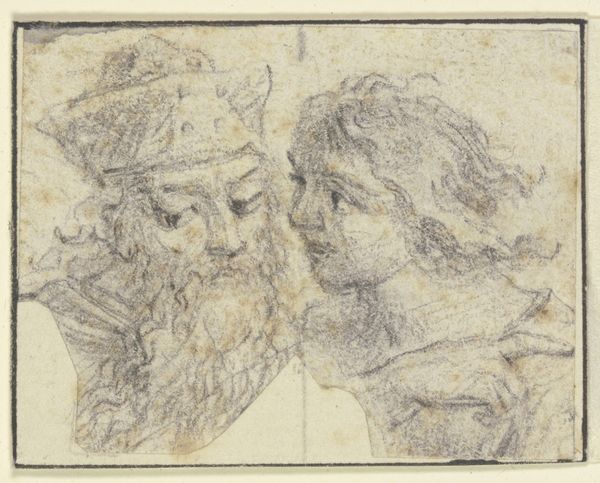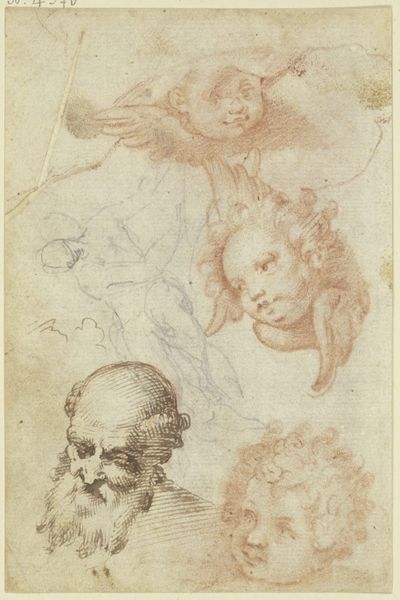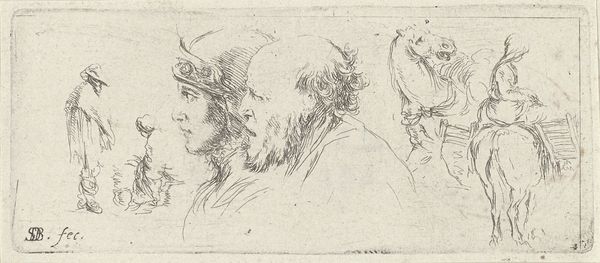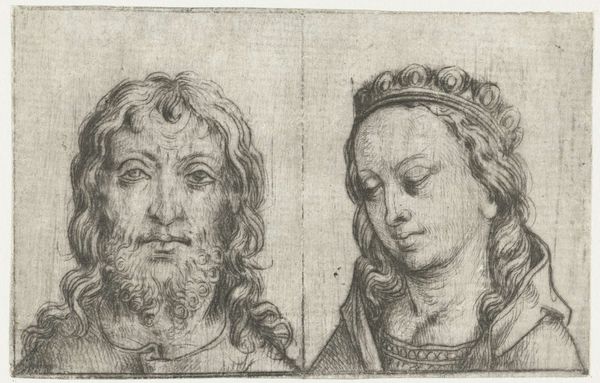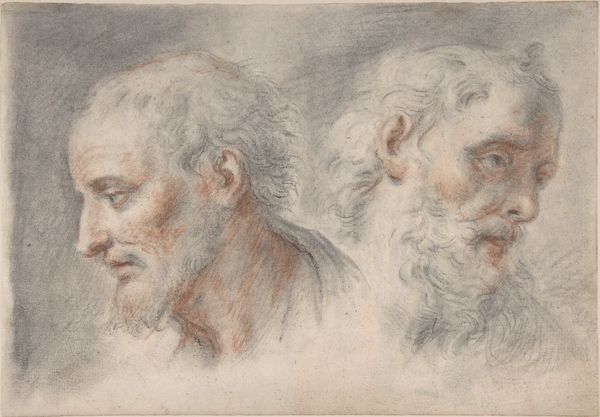
drawing, paper, ink, charcoal
#
portrait
#
drawing
#
toned paper
#
charcoal drawing
#
figuration
#
paper
#
11_renaissance
#
ink
#
portrait drawing
#
charcoal
Copyright: Public Domain
Curator: Here we have a sheet of studies by Joos van Cleve, titled "Studienblatt: Köpfe von Christus, Maria und zwei weiteren Männern" – a sheet of studies of heads featuring Christ, Mary, and two other men. Editor: Wow, what strikes me first is the sheer sadness emanating from these faces, particularly Mary and Christ. Their eyes are cast downward, almost as if they're weighed down by the sorrow of the world. Curator: It's fascinating to consider this in relation to artistic practice at the time. Sheets of studies like this one were common training devices for artists. The Städel possesses a considerable collection, enabling insight into workshop practices and model books. The use of charcoal and ink on toned paper really enhances the shadows. Editor: The fact that these are studies complicates things for me. Are we meant to view them as isolated expressions of grief, or as components of a larger, perhaps propagandistic, narrative? Knowing how art and religious institutions historically wielded visual language to control emotions and beliefs, I am critical. Curator: It’s both, I think. Van Cleve was active in a workshop setting, where model books or sheets of studies would have facilitated a uniformity of style, or at least an ease in executing common motifs. But there is a great individuality here, in the attention to musculature, and facial features that makes them much more than rote copies. These faces were rendered from life in preparation for altarpieces commissioned by the church. Editor: I appreciate the way Van Cleve captures the weariness of the figures. I wonder, how might contemporary viewers interpret these studies in light of the ongoing struggles against systemic injustice, especially if you think about religious leaders turning a blind eye to contemporary human suffering? Curator: The accessibility is key, I think, here at the Städel. Art institutions, particularly those with deep ties to specific political entities or patronage, play an active role in constructing what gets to be visible and by whom. The figures are simultaneously historically placed, yet eternally relevant, in a way that continues to attract viewers and, hopefully, generate a broader understanding of the contexts that made this kind of religious work possible. Editor: Absolutely. It reminds us of art's continuing ability to spark conversations and questions that transcend time. The convergence of grief, devotion, and artistic skill – alongside a critical understanding of how art can manipulate emotion – can make a really lasting impact.
Comments
No comments
Be the first to comment and join the conversation on the ultimate creative platform.

